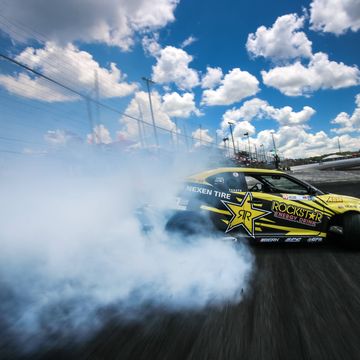Scion, you may have heard, is no more and the former Scion FR-S is now, as of the 2017 model year, called the Toyota 86. That changeover just happens to coincide with what was an already-scheduled enhanced mid-cycle facelift. Except that this one was more than a facelift. It was what carmakers call a “major/minor.” So while the 86 does get the new front and rear clips typical of mid-cycle makeovers, Toyota also added chassis strengthening and powertrain improvements. Yes!
“Everything that was done was done to make it a better-driving vehicle,” said Allen Vaught of vehicle marketing and communications at Toyota.
And what was the performance target of the makeover? Nothing less than the previous-generation BMW M3 and Porsche Cayman. That’s a heck of a target for a car that costs less than $30,000. But aim high, we always say.
First, the outside: Changes done as part of the new front and rear facelift actually add more aerodynamic downforce to the car for better turn-in, Vaught said. The front suspension gets stiffer springs and shocks, as well as friction reduction inside the shocks themselves. Front sway bars stay the same. In back, the suspension is actually softened to reduce the amount of NVH the previous rear setup transmitted into the cabin. Softer rear springs and shocks also limit the amount of skittering the previous rear allowed.
“There was a potential for it to effect bump steer,” said Vaught. “So they really wanted it to soak up bumps better.”
Roll stiffness is maintained by beefing up the rear sway bar.
“So now you should experience a car that’s more stable on bumps, more stable on turns, you can actually push it farther before oversteer occurs.”
Vehicle Stability Control, as it was called on the Scion, is now called TRAC, and it allows a little more slip before intervening. Or you can just turn it off and do donuts. The tires are still shared with the Prius Plus: 215/45R-17s, but there are a couple of TRD wheels available, too -- one 17 inches and one 18.
The body is also strengthened in the 86: The front strut tower brace where it mounts to the bulkhead is beefed-up; extra metal is added inside the transmission tunnel; brackets are added to the point where the rear struts attach; and the whole rear trunk area and cross brace are stiffened. And it still weighs just 2,774 pounds in manual trim (2,815 in automatic).
What’s it like to drive?
For our first drive loop in some moderately hilly country, we tried the TRD version of the new 86, with lowering springs, TRD sway bars and TRD exhaust. This we might recommend for newly paved billiard tables, but on real roads -- even fairly well-maintained roads like the ones we drove it on -- it's a little harsh, at least for our sensitivities. Maybe “real” racers will want it and maybe it’ll give them faster lap times. But we weren’t on a track (though we would have liked to have been). Likewise the exhaust is too loud for our dainty ears. Maybe we’re exaggerating, maybe we’re not too frail and maybe the TRD options are too stiff and too loud for anyone. Maybe you, a man of steel, would like them.
Our judgments were validated when we got into the stock 2017 Toyota 86. Just because you can make something stiffer doesn’t mean you’ll go faster with it. The stock suspension setup is just right and probably faster than the almost-bouncy TRD setup.
And, man, is this car fun to drive! If you haven’t been in one of these in a while go find one and drive it. The owner won’t mind. Ours was a six-speed automatic, which we also recommend (speak for yourself, Vaughn -- Ed.) because it shifts faster than you can and because it’s more comfortable in traffic. On curves, of which we found many, the stock 86 is a smooth, fast dream to drive. Go over a bump and the 86 soaks it up and stays in line. Body roll is minimal to non-existent. Thank goodness someone is making cars that are fun to drive.
The only thing we’d change is to expand the model line to offer something this much fun with a slightly more usable back seat. We would give up some coupe styling for a more practical, well-rounded, even slightly boxy daily-driving boy racer. Think of the Alfa Giulia, Datsun 510 or BMW 2002. Those had front engines and rear drive, and were icons of inexpensive, practical performance. But short of that, we love the 86 as much now as we did when it first came out. Even more with these improvements.
Do I want it?
The only thing we can think of close to the Toyota 86 in performance for the dollar is the four-cylinder Mustang. That's another fun, inexpensive, front-engine rear-drive car that we’d recommend. We’d recommend either of them. Let’s hope enough people buy cars like this so carmakers keep making them.
Vehicle Model Information
ON SALE: Now
BASE PRICE: $27,120
AS TESTED PRICE: $27,840
POWERTRAIN: 2.0-liter longitudinally mounted boxer engine, rwd, six-speed manual
OUTPUT: 205 hp at 7000 rpm, 156 lb ft at 6400
CURB WEIGHT: 2774 pounds (mfg.)
FUEL ECONOMY: 21/28/24 (manual)
PROS: The most tossable car you can buy for the money
CONS: Back seat way too small












